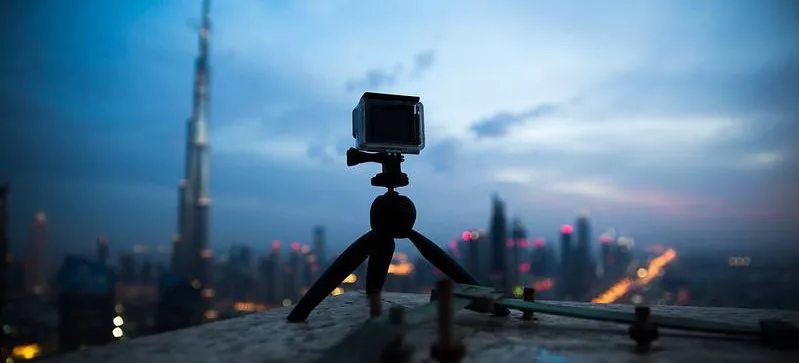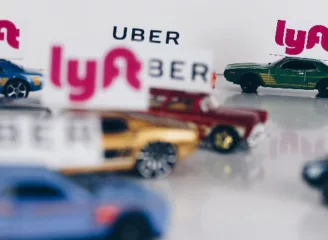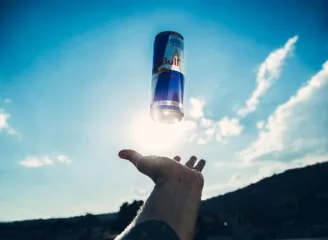Let’s say that your brand competes in a monopolistic environment. Meaning, that you’re playing with sellers whose product is different in some way but ultimately serves a similar purpose. But then stronger new players decide to invade the territory aiming to wipe everyone out. How would you play?
GoPro has been facing this type of ecosystem. It lives in a highly competitive environment, competing in the digital camera industry, with well-known established brands, but this industry’s sales have dropped by 87% since 2010, losing shares to the smartphone companies.
Over the years, GoPro has succeeded in establishing an enduring brand despite the decline of their industry, by evolving their income resources and continually strengthening their brand.
Although GoPro has been facing challenging years, looking at GoPro’s Q1-Q2 2021 results, it seems that their ongoing strategy has proved itself.
Inspired, I decided to try and learn from GoPro’s brandformance strategy.
The beginning of Nick Woodman’s entrepreneurial story
Isn’t that different from any other fantasies that aspirational 25-year-olds have. He wanted to have a successful business by the age of 30, but he didn’t know exactly what it would be.
Figuring that ideas wouldn’t pop up while sitting at home he went on a surf trip, but not before he ordered a waterproof camera and strips from the internet and set it all up so he would capture himself while surfing.
After using it for the first time, he was captivated. He shortened his trip, went back home, and started to work on his project.
“I found things that existed in the world and adjust it to my need
2 years later, in 2004, the first GoPro camera arrived. Nick marketed it to surf stores and tradeshows. It went well but he realized that the surf market was too small (at the time). Step by step, Nick improved the product, proceeding to hire one friend or family member a year for the next several years.
In 2009, The First HD GoPro was released and then came the breakthrough
The combination of high-quality video and the rise of YouTube made it easy for GoPro users to share their experiences.
This prepared the ground to virally spread their content as Facebook arrived.
“We had to drive awareness to this solution that never existed before and get people excited by it so the brand building was maybe more traditional, more advertising, more classic ad-based more paid brand building, and then as we grew and sold more cameras and hero cameras got it to the hand of our customers, our customers really started to do a lot of the brand building for us, through the videos and the photos they were sharing…
In order to exploit the momentum, and push the brand forward, the management decided to open a media division that would create great content that had never been seen before.
What actually happened was that the most entertaining and the most engaging videos came from the customer community. So they pivoted the media division to be a lighthouse of all the amazing stuff that could be done with GoPro.
That move had served its purpose, the users had raised the bar by creating outstanding content. Since then the GoPro community has developed, and today the members enrich each other with their videos, and the media division is closed.
Understanding that their customers are the engine that drives the brand forward, in 2015, the GoPro team looked for their next step, deciding to champion its users with a reward program.
“At that point, GoPro became a viral lifestyle brand
In 2018: Return to brand basics
GoPro has positioned itself more as an extreme sports camera company, a move that caused some criticism. In response, the GoPro team tried to soften a little their shared content on their social platforms.
“…we watered down the brand a bit, we tried to be more mainstream, we got boring and we started to look like kind of everything else…
With the launch of HERO7 Black, GoPro decided to rely on their users to create the product’s official highlight reel video with a $1 million prize to be shared equally between the content creators whose videos were selected for the final reel.
This move proved extremely successful since then, the million-dollar challenge is the main part of every new GoPro launch.
These days the type of content shared on GoPro’s social feeds has evolved significantly and is now much more energetic and aspirational.
My takeaways from GoPro brandformance story
- If you find what works for your brand’s growth, stick with it, optimize it and perfect it.
- Your brand needs to constantly evolve. It’s important to listen to the surroundings and to adapt, but always find a way to measure your actions, because if you don’t you can’t really gauge the impact.
- The advertising budget doesn’t have to be spent just on traditional advertising platforms.
Near the beginning of its journey, GoPro found that their users are the main channel of growth. The key thing that stood out to me as I explored their path is the fact that even though they could have left this channel as an organic channel, putting in no additional effort, they saw it as an opportunity to grow and decided to treat this channel as a “develop your strength approach”. This approach was their guide throughout and they changed their strategy accordingly.
Or, as Nick described it so well:
The magic of GoPro’s brand doesn’t stand on a marketing or an ad campaign, it stems from the creative exploits of millions of people around the world getting up all sorts of creative inventive things and showing us the audience what the world is up to.
(Nick Woodman on the Gentleman’s Journal Podcast,15:35, >Google Podcasts, >Apple podcasts)
 Linkedin
Linkedin
 Facebook
Facebook



